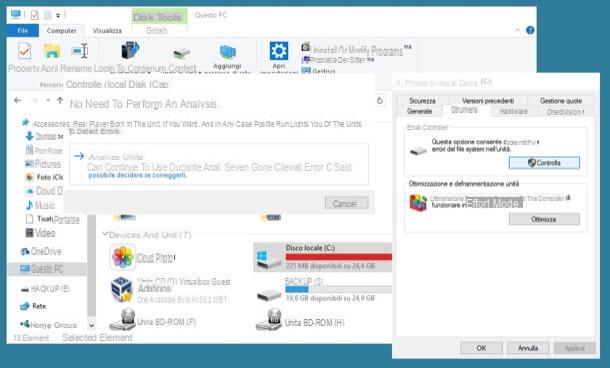- Price and availability
- Information
- A very neat design, but a little curious choices
- An almost perfect screen
- An ultra-powerful smartphone
- An OS still as well thought out
- A quality photo part, but perfectible
- Autonomy that leaves something to be desired
- Comments
The OnePlus 9 Pro is the brand's new flagship. The manufacturer offers an ultra high-end phone for less than 1000 euros and with a very solid technical sheet. This time, the focus is on photography thanks to a module produced in partnership with Hasselblad. All this gives hope for an excellent vintage from OnePlus. It remains to be seen whether this cocktail holds up once in hand.
The OnePlus 9 series consists of two terminals: the classic OnePlus 9 and the OnePlus 9 Pro. It is the latter that we are testing today. True flagship of the Chinese brand, it wants to come and compete with the tenors of the ultra high-end such as the Galaxy S21 Ultra, the iPhone 12 Pro Max or the Huawei Mate 40 Pro, but remaining below 1000 euros.
Its technical sheet is salivating: large 1440p AMOLED display with a refresh rate of 120 Hz, ultra-powerful processor and above all a new photo module designed in collaboration with Hasselblad. It is on this last point that the manufacturer is particularly betting.


OnePlus 9 Pro best price comparison
Comparison to buy the OnePlus 9 Pro at the lowest price.
Best prices
-
 709.00 € View Darty
709.00 € View Darty
-
 919.00 € See Fnac
919.00 € See Fnac
The photo part has always been the weak point of the brand. Far from being awful, it has never risen to the level of competition. OnePlus has therefore decided to strike hard by announcing a partnership with the Swedish optical giant Hasselblad for the next three years. The OnePlus 9 series is the first to benefit from this deal, and more particularly the 9 Pro. Simple marketing announcement or real more for the user? That's what we're going to see. More than a photophone with a beefy technical sheet, is the OnePlus 9 Pro good in everyday life? Can it rise to the level of the competition? Detailed answer in this test.
Price and availability
The OnePlus 9 Pro will be available from March 31 on the OnePlus site. It is in two versions. The first has 8 GB of RAM and 128 GB of memory and is sold at the price of 919 euros. The second, the one we are testing today, has 12 GB of RAM and 256 GB of memory. It is sold at 999 euros.

We have much higher prices than what OnePlus has offered us in the past, especially with the 8T (700 euros maximum). However, if we compare with smartphones from the competition, the 9 Pro is always cheaper with an equivalent technical sheet. Note that the classic 9 is sold for 719 euros or 819 euros depending on the model.
Information
Let's not go four ways: the technical sheet of the OnePlus 9 Pro is a dream. We have already mentioned the 1440p AMOLED screen at 120Hz, but we must also point out the presence of the Qualcomm Snapdragon 888 processor, the new king of the high-end market, as well as a photo module made up of four sensors (all designed by Sony, Hasselblad dealing with software processing), including a main one of 48 megapixels. We also appreciate the presence of Android 11 with the Oxygen OS 11 overlay, always an example to follow in this area.
| OnePlus 9 Pro | |
|---|---|
| Screen | 6,7 " 1440p Fluid AMOLED 120Hz Display |
| chipset | Qualcomm Snapdragon 888 (5nm) |
| OS | Android 11 + Oxygen OS 11 |
| RAM | 8Go / 12Go |
| Warehousing | 128 Go / 256 Go |
| microSD | No |
| Main sensor | 50 MP + 48 MP + 8 MP + 2 MP |
| Secondary sensor | 16 MP |
| Battery | 4500 mAh 65 watt fast charge 50W wireless charging |
| 5G | Yes |
| Water resistance | Yes |
The only concern we have is in the 4500 mAh battery, which seems very meager on paper, but which is compensated by a fast charge of 65 Watts (and 50 Watts in wireless). In theory, we are dealing with a small bomb here, but you know that a technical sheet is not everything.
A very neat design, but a little curious choices
The OnePlus 9 Pro is available in three colors. We have a green smartphone, but also a black one, which adopts a matte appearance. The third color, named “Morning Mist (or gray), flaunts a glossy finish for a half-smoked mirror look. Our test copy displays this color.

Real ice placed on your smartphone, this glass finish allows you to recognize the OnePlus 9 Pro immediately. Visually it's a great achievement and this style gives the product an ultra luxury look which, let's not be afraid of words, is stunning. However, this cover has the defects of its qualities since like a classic mirror, it marks very easily at the level of fingerprints and the most maniacs will spend their time wiping it. This surface is also prone to micro-scratches. Note that OnePlus provides a sober, but chic rubber shell in its case for those who want it. Other hulls are also sold on the official website.

The device has two other strong visual features : the camera module, first of all, it has four sensors, two of which are the main ones that clearly stand out from the hull (which tends to make the 9 Pro wobbly when placed on its back). If this element is a little "placed there" without worrying about connecting with the rest of the smartphone (Samsung has for example clearly integrated the module into its design of the S21), it allows you to recognize it immediately. We note the presence of a small "Hasselblad" integrated into the glass of the module.

The second visual particularity is more classic, since it is curved edges on the sides (the screen is also curved, we will come back to this) which give an impression of finesse. Everything is held together by an aluminum frame in which the physical buttons are integrated.

As usual, OnePlus places the power button on the right edge and the volume button on the left, unlike most other Android models where everything is on the right. If the 9 Pro is your first OnePlus, you will therefore be confused at first. On the right is the button dedicated to silent mode, a gimmick from the manufacturer. The latter, notched in appearance, can be placed on three levels: silent, vibrate and buzzer. It doesn't look like much, but it allows you to mute your smartphone without even turning it on. Handy if you're in a meeting or at the cinema (well, not right now). A small addition that we would like to see more often on the Android market, as it is practical on a daily basis.

For the screen part, we have a panel taking up almost the entire front (screen/front ratio greater than 90%) of 6,7 inches. The screen is curved on the sides. A very slight tilt, almost invisible, but enough to make the vertical edges practically disappear and give an impression of extreme thinness to the product (which is still 8,9 mm, which is above average). We like it or we don't like it, it depends on taste. For our part, we are rather customers. Note that the classic OnePlus 9 has a flat panel.

The fingerprint sensor is obviously placed under the slab and can really be confusing at first. It is in fact located very low on the screen. Too low. A somewhat curious placement which does not really make its use very natural and which is a bit of a stain when you see that it was placed higher on the 8T, for example. This sensor will take some getting used to, but it may take some time (we're still struggling after a week of testing). Technically speaking, it is still as efficient as ever. We found no difficulty in identifying ourselves during our test. This fingerprint unlocking can also be paired with Android's facial recognition, disabled by default here.

In hand, the OnePlus 9Pro is pleasant, in particular thanks to a very balanced weight (192 grams). However, we do not avoid some pitfalls, such as a smooth surface, certainly pleasant to the touch, but which tends to slip between the fingers during manipulations. Beware if you are the Gaston Lagaffe type. Overall, the design of the OnePlus 9 Pro is successful. We appreciate the manufacturer's know-how in this area as well as the very chic, even luxurious visual aspect. However, the devil is in the details and we can regret two or three small things, such as a badly placed fingerprint sensor or a very dirty hull. But overall, it's a success from the manufacturer.

An almost perfect screen
The One Plus 9 Pro is equipped with a Samsung AMOLED panel with a size of 6,7 inches and with a definition in QHD+, i.e. 3168x 1440 pixels. It has a refresh rate of 120 Hz, which brings additional visual comfort to the user compared to 60 Hz, but which has the drawback of consuming more battery. It should be noted that it is quite possible to go back to 1080p and 60 Hz if you want to gain a little autonomy. We obviously analyzed the performance of the screen using a probe, and the results convinced us.

The OnePlus 8T disappointed us a little with the calibration of its panel. The brand has corrected the errors of the past by offering an almost perfect screen. It is possible to opt for three options. The first, Vivid, makes the colors "explode" in order to make the panel more impressive to the eye. The "Natural" mode offers, as its name suggests, respectful colors. Finally, the "advanced" mode gives the informed user the possibility of adjusting the temperature and colors themselves.
AMOLED requires, we have infinite contrast, and in all modes. The blacks are therefore deep and the whites bright. In Vivid mode, the smartphone shows an average Delta E of 3,5, which is good. On closer inspection, we notice that it is mainly the reds, greens and yellows that are “flashy” in order to give a flashy appearance to the screen. In natural mode, this average drops to 1,9, which is excellent. The original colors are therefore respected and it is fashion that you will have to choose to admire your photos. Of course, it seems duller compared to the "Vif".

We note that the “Vivid” mode displays a temperature of 6800K, which is good and close to the 6500K of the video standard. On a totally white display, it therefore pulls very slightly towards blue, but this is almost imperceptible. The natural mode is still exemplary, with a perfect temperature of 6500K. Finally, regarding the maximum brightness, it is correct without necessarily shining, at 545 cd / m² in vivid mode and 480 cd / m² in natural mode. It's not exceptional, but enough to have good visibility in full sun. Ultimately, the OnePlus 9 Pro panel is excellent and does not suffer from any defect, offering a perfect calibration and an image worthy of its rank.
Read also – OnePlus 9 and 9 Pro: 120 Hz, LPTO, DisplayMate… the brand reveals information on the screen
More than a good display, OnePlus offers a few interesting little things on its screen part. The most important is the adaptive resolution when the panel is in 1440p, in order to save energy. Clearly, when you watch a video in 1080p, the screen automatically adopts this resolution in order to save battery. Smart and above all deactivatable if you want to upscale a video. Similarly, the 9 Pro also has an adaptive refresh rate (as Samsung does on its S21) which ranges from 1 to 120 Hz. Again, the screen adapts according to the content displayed (photos, videos, games, etc.). Very nice little things that enhance the comfort of use and above all allow you to gain autonomy. We will see that the telephone really needs it.

Finally, OnePlus insists a lot on the Hyper Touch function. Compatible with four games so far (Brawl Stars, LoL Wildrift, PUBG, and Call of Duty), it saves in-game touch response time. Let's face it, we're not avid mobile gamers and we don't We haven't noticed any big differences between our games with the mode activated and without, but there's no doubt that high-level players will find it useful. Asus, for example, relies heavily on its ROG range.

Regarding the audio part, OnePlus has done a great job given the format of the product with a clear and well-balanced sound. We will note all the same an ingenious placement of the loudspeaker, on the lower edge, but close to the edge. This means that when watching video, your palm won't press the audio output, which is very nice. A second speaker is located at the top of the screen.

An ultra-powerful smartphone
OnePlus has always had the habit of putting the latest Qualcomm processors in its terminals. The OnePlus 9 Pro (and the classic model) is no exception. It embeds a Snapdragon 888, the manufacturer's flagship processor currently. The smartphone is available in two versions, one with 8 GB of RAM and 128 GB of memory and one with 12 GB of RAM and 256 GB of memory (which we are testing). Let's not be in suspense, the OnePlus 9 Pro is one of the most powerful smartphones on the market today, placing itself alongside behemoths like the Galaxy S21 Ultra, the Asus ROG Phone 5 or the Redmi Mi 11. No worries about that.

In use, this results in a high-performance phone, both in classic navigation (no jerks or crashes, of course) or in games, which all run with the graphics at full throttle. note that OnePlus still offers its game mode (formerly Fnatic) which allows you to see at a glance the performance, the heating of your phone and to share images or videos.

The Snapdragon 888 is a SoC that heats up and the OnePlus 9 Pro is no exception to this pitfall. However, the heat is well distributed over the surface of the phone and if it is there, it does not make the game unpleasant. If we have not endured the overheating problems encountered by some copies, remember that OnePlus promises to correct the problem via a firmware update.

CLICK HERE TO BUY THE ONEPLUS 9 PRO
An OS still as well thought out
The OnePlus 9 Pro does not reinvent the wheel in its software part. We still have Android 11 with the Oxygen OS overlay, a duo that we know well, as it is already present on the brand's previous models. We are on familiar ground and we can affirm it once again, Oxygen OS is still the best overlay on the market.

Ultra customizable, it allows you to modify all aspects of the phone, such as the colors of the interface, the shape of the icons... but also various small things such as the animation of the fingerprint sensor, the color of the edges of the screen (when placed on its back and displaying a notification) or even the OS font. We appreciate the always-on display mode, which offers several different and original displays (summary of your day, canva photography, classic, etc.).

But the great strength of Oxygen OS is good its ease of use. Indeed, it really brings a plus compared to classic Android, especially in its layout and the way it is thought out. For example, when using the screen with one hand, everything has been designed so that interactions can be done with the thumb in proprietary applications, so in the lower part. It may be a detail, but we appreciate it. In short, not much to reproach this overlay, always exemplary both in its form and in what it offers in terms of use. An example to follow.
A quality photo part, but perfectible
OnePlus has always struggled to convince on its photo part. To try to correct this problem, the brand has gone to great lengths by signing a partnership with the Swedish manufacturer Hasselblad. This collaboration runs for three years and the OnePlus 9 range is the first to benefit from it. Thus, the company specializing in optics takes care of all the software part of the OnePlus 9 Pro, with some success. The terminal is equipped with a module made up of four sensors. The main one is a 789-megapixel Sony IMX48 while the wide-angle one is a 766-megapixel Sony IMX50. Added to this is an 8-megapixel Telefoto sensor as well as a 2-megapixel monochrome sensor. Note that the classic OnePlus 9 has different sensors, but also benefits from the work of Hasselblad.
In automatic photo mode, the processing software works wonders. During the day with good light, we have very controlled shots, with good light balance and excellent color management. We are not at the performance level of a Huawei Mate 40 Pro, but we are facing a good camera, especially when we know the manufacturer's liabilities in this area.



The module has a wide angle X 0,6 still very good as well as an optical zoom X 3,3. Added to this is an X30 digital zoom which offers readable shots, if not usable.

The APN is particularly good close up, thanks in particular to a super macro mode that allows you to take excellent photos up close.





The OnePlus 9 Pro has a very well done portrait mode which allows you to focus on your model (both human and animal) and create a blur effect around it (and which also works in selfies). This treatment, of course software, works perfectly and gives natural photos. The cutting of the silhouette of the subject is indeed irreproachable. Good pick.


Note also the presence of a "change of inclination" mode which allows you to take pictures in "model" mode. A small gadget not necessarily useful, but which once again gives very correct photos. Ideal for posting on social networks.


The night mode has also been improved, making it possible to have readable images even when the light is lacking. However, it should be noted that the software tends to exaggerate the brightness for a clearer rendering, to the detriment of naturalness.

Finally, OnePlus offers a very complete pro mode for the most experienced users (with the possibility of saving photos in RAW!), in addition to the traditional timelapse, panorama or slow motion modes.

A good camera, which finally allows OnePlus to offer a correct experience. We are not here facing the best photophone on the market, but a product that masters its subject, in particular thanks to its efficient software processing. It should be noted, however, that all is not rosy in the country of OnePlus, since we noted a small latency between the moment we take the photo and the final shot, and this of the order of a few milliseconds. This poses no problem on models who know how to pose or on landscapes, but it can quickly become frustrating on subjects that are constantly moving, such as children or animals. Likewise, a noticeable grain may appear on some shots, which is suspected to be the result of sometimes excessive software processing.

Note that video can record and 8K and 30 FPS ou 4K 120 FPS, which is very much appreciated. The results are, unsurprisingly, very good.

CLICK HERE TO BUY THE ONEPLUS 9 PRO
Autonomy that leaves something to be desired
The OnePlus 9 Pro has a 4500 mAh battery, which seems a bit tight on paper. In practice, this is confirmed. By activating the definition in 1440p as well as the refresh rate of 120 Hz (i.e. the maximum that we can do in terms of quality), we have struggling to wrap up a day using the phone in a "normal" way, the battery showing a level below 15% at bedtime. If you force a little on the use, you will be forced to go through the recharge box during the day. We gain between 10 and 15% by being satisfied with a refresh rate of 60Hz. Switching to 1080p/120 Hz mode lasts a day and a half, which is much better. In Full HD + and 60 Hz, we can still grab a few hours. Admittedly, 1440p may seem a bit gimmicky on this screen size and the visual gain isn't huge, but it's a bit of a shame to have to restrict yourself to a 1000 euro product to hope to use your smartphone serenely, no ? In short, we are disappointed on this point, the battery being really the weak point of this terminal.

On the other hand, the OnePlus 9 Pro still offers a very appreciable fast recharge of 65 Watts thanks to the charger supplied in the box. During our various tests, we measured a recharge time of 2% to 100% in 39 minutes, which is very fast (but beyond the 28 minutes promised by OnePlus). Note that the terminal is also compatible with 50 Watt wireless charging. Using the appropriate dock (but sold separately on the OnePlus site) we measured a charging time of 58 minutes. Again, that's impressive.

It should be noted that in charge, Oxygen OS displays various information such as notifications or your travel time to work if you recharge it at the time you usually leave.

OnePlus 9 Pro best price comparison
Comparison to buy the OnePlus 9 Pro at the lowest price.
Best prices
-
 709.00 € View Darty
709.00 € View Darty
-
 919.00 € See Fnac
919.00 € See Fnac


























